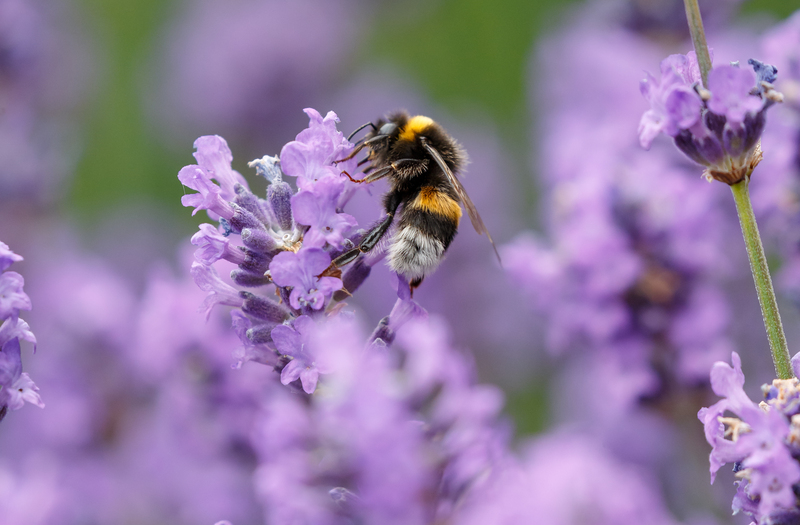Transform Your Garden with Sculpted Hedges
Posted on 20/08/2025

Transform Your Garden with Sculpted Hedges: The Ultimate Guide
Dreaming of a unique landscape that combines artistry with nature? Transform your garden with sculpted hedges and create an outdoor masterpiece that reflects your style and personality. Whether you're aiming for classic European elegance or modern, whimsical shapes, hedge sculpting--also known as topiary--offers endless possibilities to elevate your green space.
What Are Sculpted Hedges?
Sculpted hedges, or topiary art, involve trimming and training live shrubs into defined shapes, from the traditional spheres and spirals, to eye-catching animals and geometric patterns. This fusion of gardening and sculpture makes your landscape not just a garden, but a conversation piece.
- Classic Designs: Cones, cubes, and arches
- Modern Styles: Abstract forms and creative patterns
- Themed Topiary: Animals, people, or bespoke designs
Benefits of Sculpted Hedges for Your Garden
Why transform your garden with sculpted hedges? The advantages go far beyond mere aesthetics:
- Increased Curb Appeal: A professionally shaped hedge is an instant focal point, impressing guests and potential buyers alike.
- Privacy & Noise Reduction: Dense, leafy topiaries provide natural screening and buffer sound.
- Biodiversity: Hedges offer shelter and food for beneficial insects and birds.
- Customization: Sculpted hedges let you showcase artistry and creativity, creating a unique garden design that reflects your tastes.
Choosing the Right Plants for Hedge Sculpting
Not all shrubs are equally suited to being trimmed into shapes. For the best sculpted garden hedges, pick species that feature:
- Dense, evergreen foliage
- Small, flexible leaves
- Responsive growth habits for regular shaping
Ideal plants include:
- Boxwood (Buxus): The classic choice, easy to trim and maintain, with lush, green leaves.
- Yew (Taxus): Tolerant of hard pruning and shade; perfect for long-lived topiary.
- Privet (Ligustrum): Fast-growing and hardy, great for lively outdoor sculptures.
- Holly (Ilex): Glossy leaves and robust habit; adds a touch of formality to any landscape.
- Lonicera (Honeysuckle): Versatile, with fine leaves and pleasant scent.
Planning Your Sculpted Hedge Garden
Before you reshape your garden with sculpted hedges, thorough planning is crucial:
- Assess Sunlight: Choose locations that meet your chosen plant's light needs.
- Prepare the Soil: Ensure well-draining, fertile ground for healthy root growth.
- Design Your Layout: Sketch the positions and forms you desire. Consider sightlines and the flow of movement through your garden.
- Space Correctly: Avoid overcrowding by leaving room for each shrub to grow into its final shape.
How to Create Sculpted Hedges: Step-By-Step
Follow these steps to transform your garden with hedge sculpture:
1. Outlining the Shape
- Mark Boundaries: Use stakes, string, or templates to outline the intended shape.
- Start Large: It's usually easier to begin with simpler, larger forms; refine over time for more detail.
2. Pruning the Hedge
- Right Tools: Invest in sharp hedge shears, pruners, and--for intricate work--topiary scissors.
- First Cut: Trim the hedge to rough proportions before refining edges and surfaces.
- Regular Maintenance: To keep its form, a topiary needs light trims every few weeks during the growing season.
3. Sustaining Growth and Health
- Watering: Regular, deep watering keeps foliage lush and vibrant.
- Fertilizing: Feed hedges twice a year with slow-release, balanced fertilizer.
- Pest Control: Monitor for insects and disease, treating promptly to maintain hedge vigor.
Popular Styles and Inspiring Ideas for Sculpted Hedges
- Formal Parterres: Bring a touch of French opulence with symmetrical, geometric beds defined by crisp, boxwood edges.
- Maze Gardens: Create your own labyrinth--perfect for large spaces and family fun.
- Whimsical Animal Topiary: Hedge elephants, birds, or even dragons will make your landscape unforgettable.
- Living Sculptures: Trendy abstract forms blend art with horticulture, adding a modern twist.
- Arches and Tunnels: Invite guests to stroll through verdant archways leading into secret garden nooks.
Combining Sculpted Hedges with Other Garden Features
To maximize the visual impact of your garden, integrate hedge sculptures with:
- Colorful Flower Beds: Surround topiaries with vibrant perennials for striking contrast.
- Water Features: Frame fountains or ponds with spirals and globes.
- Garden Paths: Line walkways with low, undulating hedges for a fairytale effect.
- Garden Art and Lighting: Highlight topiary forms with well-placed sculptures and subtle illumination.
Maintenance Tips for Stunning Hedge Sculptures
Consistent care ensures your hedge art remains vibrant and defined every season:
- Seasonal Pruning: Carry out heavier trims in late spring and midsummer; light shape-ups throughout the growing period.
- Feeding: Top dress with compost annually and use slow-release fertilizer for sustained health.
- Weed Control: Keep bases clear of competing weeds and mulch for moisture retention.
- Inspect Regularly: Watch for dead wood, pests, or diseases and address quickly for ongoing vigor.
DIY vs. Professional Hedge Sculpting Services
Should you tackle hedge sculpting yourself or hire a pro?
- DIY Hedge Sculpting: Ideal for hands-on gardeners who enjoy regular outdoor activity. Start simple, using wire frames or templates, and advance to intricate forms as your skills develop.
- Professional Topiary Artists: For complex designs or instant impact, skilled landscapers can deliver breathtaking, precise forms--and handle ongoing maintenance.
Either approach can help transform your garden with stunning hedge art--just tailor your plan to your time, budget, and confidence level.
Common Challenges and How to Overcome Them
Every garden design journey has its hurdles. Some typical issues include:
- Patchy or Sparse Growth: Ensure adequate sunlight, feed regularly, and fill gaps with new plantings if needed.
- Disease or Pests: Select resistant species and keep an eye out for warning signs like discoloration or leaf loss.
- Overgrown Hedges: Rejuvenate by cutting back severely during the dormant season, allowing for fresh, controlled regrowth.
Seasonal Care for Your Sculpted Hedges
- Spring: Begin shaping as new growth emerges; check for winter damage.
- Summer: Maintain sharp shape with regular light trims and consistent watering.
- Fall: Feed with low-nitrogen fertilizer to strengthen roots.
- Winter: Avoid heavy pruning; brush off snow to prevent limb breakage.
Frequently Asked Questions about Hedge Sculpting
- How long does it take to grow a sculpted hedge? It depends on the species and size; small forms within 2-3 years, large or complex shapes may take 5-10 years.
- What tools do I need? Sharp hand shears, secateurs, loppers, topiary frames or templates, and sometimes electric trimmers for larger hedges.
- Can you sculpt existing mature hedges? Yes, though options may be more limited; some overgrown hedges can be radically cut back and reshaped.
- How often should I trim a sculpted hedge? Light trims every 4-6 weeks during the growing season; major shape-ups yearly.
Expert Tips to Transform Your Garden with Sculpted Hedges
- Start Simple: Master spheres and cubes before advancing to elaborate shapes.
- Patience Is Key: Hedge sculpting is an art that evolves over time; growth, shape, and definition improve year by year.
- Focus on Health: Healthy, vigorous plants are easier to shape and recover quickly from pruning.
- Embrace Creativity: Let your imagination guide new designs--from geometric to fantastical forms.
The Impact of Sculpted Hedges on Your Property Value
Investing in well-maintained and artistically sculpted hedges significantly boosts your home's curb appeal and market value. According to real estate experts, homes with eye-catching landscaping can command prices up to 10% higher than average. A professionally designed garden filled with unique, sculpted hedges signals care, creativity, and pride in ownership--qualities every potential buyer admires.
Get Inspired: Notable Hedge Gardens Around the World
Fuel your imagination with these world-famous examples:
- Levens Hall, England: Home to the oldest topiary garden globally, featuring dramatic spirals, cones, and fanciful shapes.
- Chateau de Villandry, France: Renowned for intricate boxwood parterres and labyrinths.
- Longwood Gardens, USA: Showcases contemporary topiary along with traditional forms.
These living works of art prove the timeless appeal and creative potential of sculpted hedges in any garden.

Conclusion: Unlock Your Garden's Potential with Sculpted Hedges
Transforming your garden with sculpted hedges is an investment in beauty, creativity, and value. Whether you choose classic shapes or imaginative forms, hedge sculpting brings structure, year-round interest, and personality to your landscape. Start planning today--your dream garden is just a trim away!
Ready to create your own sculpted hedge masterpiece? Gather your tools, nurture your imagination, and watch your outdoor space flourish into a living work of art!



